October 3, 2019
A Peek Inside ChargePoint's Advanced Test Facility
The effort to accelerate electric vehicle (EV) adoption worldwide requires that charging stations be safe and reliable. This is why ChargePoint has made substantial investments in hardware quality and reliability testing. Here you will take a peek inside our 16,000 square foot, in-house test facility!
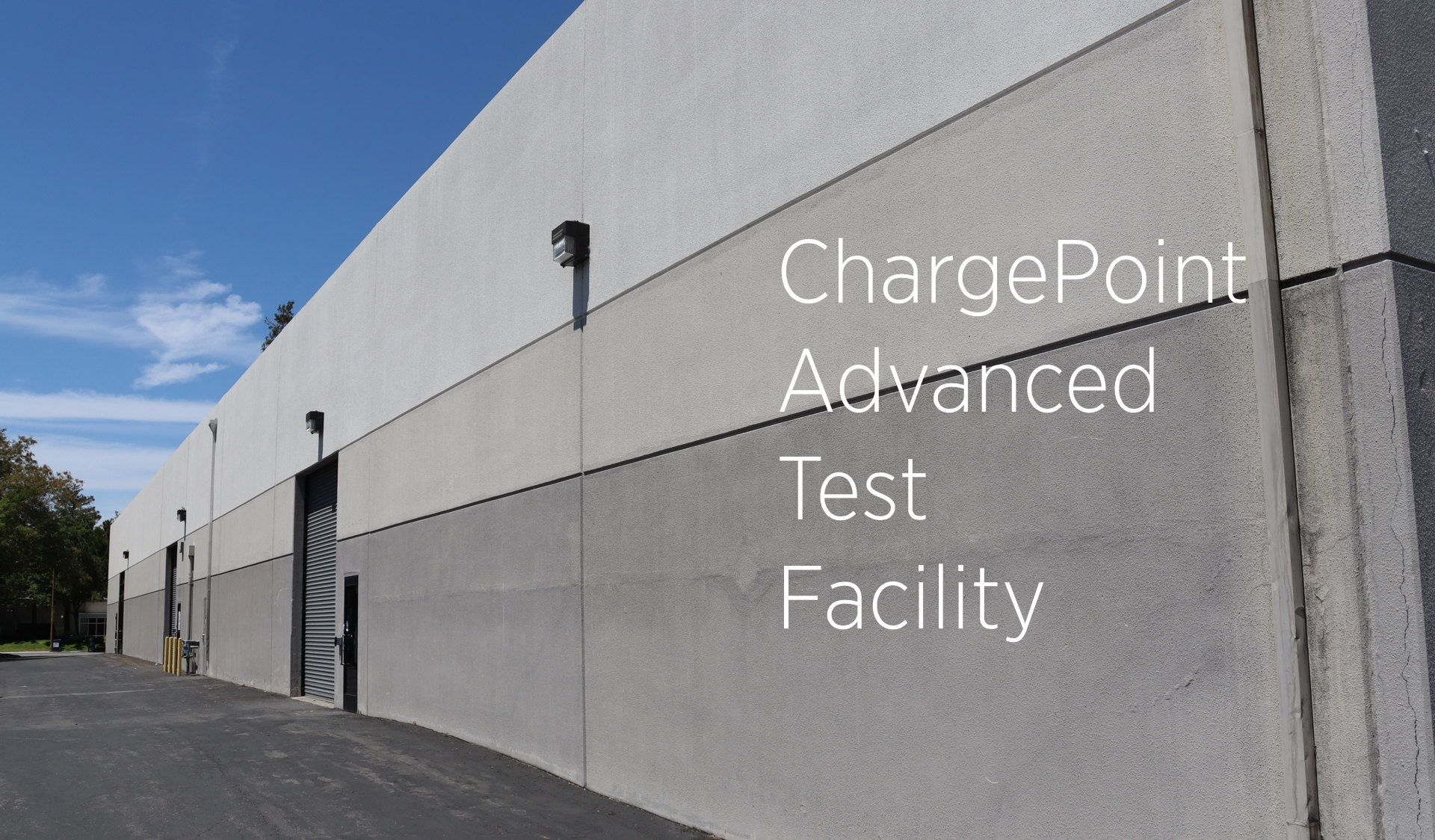
The ChargePoint Advanced Test Facility sets a new benchmark for competitive product development within the EV charging industry. It contains a comprehensive testing suite that includes mechanical, environmental and operational stress tests conducted on both subsystems and fully-assembled chargers. High-capacity test resources at the lab—including mechanical test fixtures, cycle testers, thermal chambers, a rain spray tester and ample amounts of high power—enable controlled testing of statistically significant sample sizes. We test through the new product introduction (NPI) phase and ongoing (ORT) to the product's production end-of-life (EOL) to ensure our hardware is as reliable as possible and that this level of reliability is maintained throughout the product lifecycle. These tests also enable the assessment of design, material and manufacturing-induced risks and the mitigation of these risks with subsequent design iterations.
Mechanical Testing
Our charging stations have been designed and integrated for resilience under impact, vibration, shock, drop and long-term cyclic wear. In these mechanical tests, all critical parts of the system are mechanically exercised, just as they would be in the field.
Impact Testing
A pendulum setup impacts the unit at a controlled energy level, simulating real-life circumstances like a rock being thrown or a passerby abusing the unit. Each product is tested up to an appropriate impact resistance, with the CPE250 leading at IK10, the highest standardized rating.
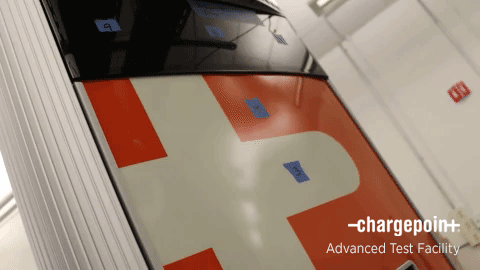
Vibration and Drop Testing
Vibration applied by a hydraulic shaker system to an operational bare system simulates stress during seismic events, while vibration applied to a fully-packaged unit simulates stress during transportation. The former is more concerned with ensuring safety following a seismic event, while the latter helps assess transportation risks in the effort to maintain consistent unit functionality upon each shipment's arrival. By the same premise, the fully-packaged product also undergoes drop testing.
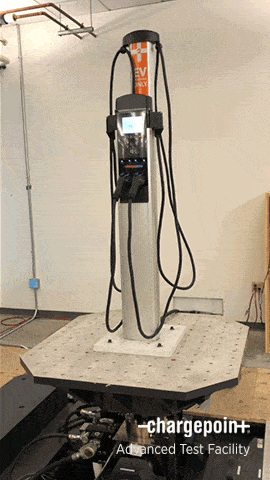
Swing Arm Cycling and Loading
To recreate potential tensile forces during handling, pull iterations are performed on each product’s cables at controlled forces and directions (defined through user studies). Taking it one step further, we also conduct high force static load and shock iterations in order to recreate scenarios involving aggressive handling or user abuse.
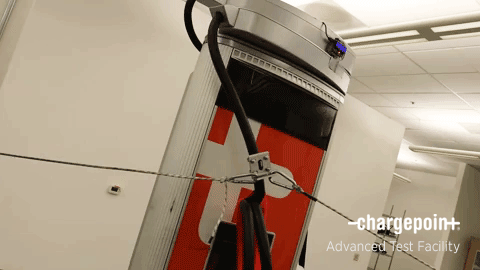

Connector Cycling
Cycling of charger connectors into inlets and holsters is automated by custom designed in-house testers. With this test, we assess risks associated with the accumulation of mechanical wear (potential interference-driven failure of connector housings, latches and/or electrical contacts).
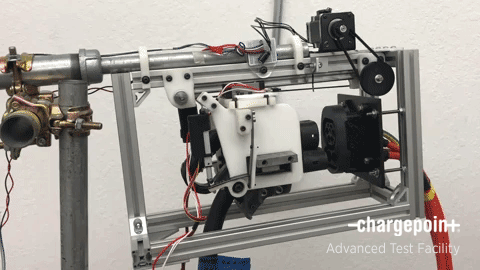
Environmental Testing
Environmental testing involves exposing units to extreme elemental conditions for prolonged periods of time to ensure they maintain functionality post-exposure.
Thermal and Temperature/Humidity Cycling
Prolonged dwells at temperatures as high as 50°C and relative humidity (RH) levels as high as 85% RH strain system electrical components and materials susceptible to corrosion or heat/moisture-driven degradation. An alternate test profile varies temperature from -40°C to 50°C (with uncontrolled humidity) to strain internal component bonding and integration interfaces that exhibit coefficient of thermal expansion (CTE) mismatches. This includes parts of the system as small as solder joints on PCBAs to larger areas of adhesive and bolts that join frames and extrusions.
From there, varying humidity profiles force cyclic condensation at both external and internal surfaces, simulating something akin to dew formation in humid climates. This stress profile is then exacerbated with modified chamber conditions that force this condensation to freeze (as water expands to ice at system gaps and on component surfaces).
The temperature and humidity tests outlined above stress our products through and beyond their intended lifetime of exposure.
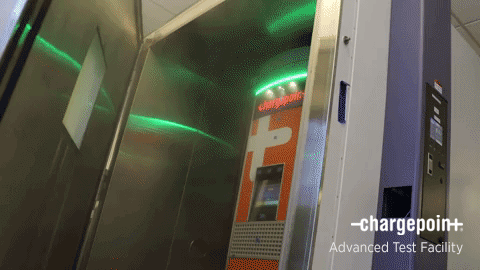
Spray, Dust and Salt Fog Testing
Spray testing helps simulate rain and pressure washing scenarios. Desert dust testing simulates prolonged conductive particle accumulation. Salt fog testing simulates accelerated corrosion in coastal regions.
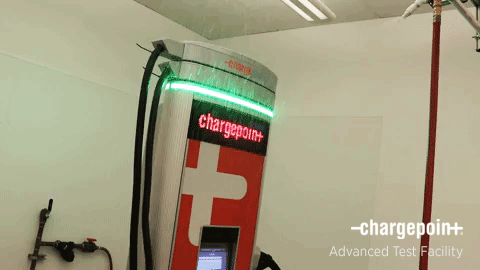
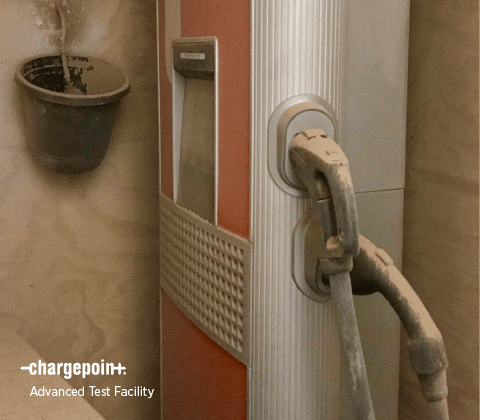
Solar Loading and UV Exposure Testing
Products are exposed to the full range of solar energy-driven photo-degradation, lightfastness, thermal loading and UV stability to test for maintained functionality. An arrangement of several high power lamps in an enclosed area outputs the full range of the sun’s spectrum to simulate solar loading, while a separate chamber concentrates UVA radiation on test units.
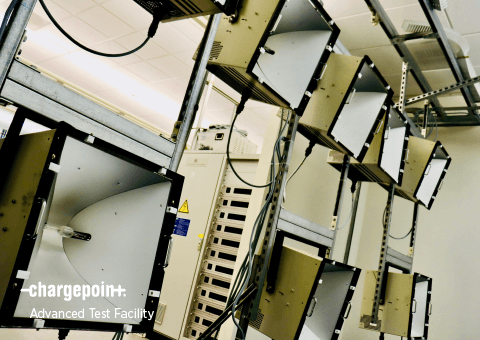
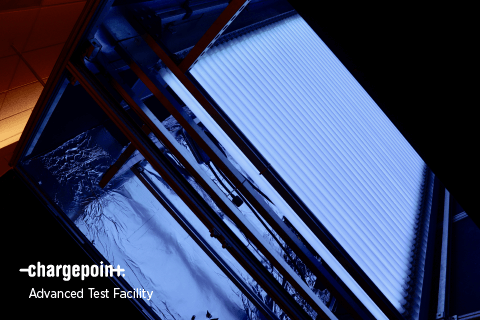
Operational Stress Testing
Arguably the most important category of testing, long-term operational stress testing exercises all critical system functions at peak conditions. This requires python and/or BASH driven automation that accelerates the product’s operations in order to simulate field usage over its intended lifecycle.
This test is then performed with the unit in an elevated environment of 50°C to challenge the system’s thermal management mechanism. This test also integrates an EV simulator, completing an end-to-end operation that simulates charge cycling as done by vehicles in the field. Meanwhile, the secondary functions of the system (such as display outputs, LED lighting and even the chime-outputting speakers) cycle outputs at maximum stress conditions.

Hard-Hitters in System Test
The tests conducted at the ChargePoint Advanced Test Facility allow our cross-functional engineering teams to develop products that are safe and reliable despite the intense mechanical, environmental and operational stress they may experience out in the field over their intended lifecycles. Risks identified through testing are assessed by severity, detectability and probability to determine an expected user impact that then justifies an appropriate timeline for mitigation.
This multimillion dollar, state-of-the-art test facility makes our commitment to product integrity loud and clear. Investing in in-house testing means we are able to both conduct a wider array of tests and achieve statistical significance more easily for each test. Vendors that opt to outsource testing to third party labs (for cost-saving purposes) simply cannot say the same.
As our team continues to grow this year, this test facility will concurrently scale with new equipment—including a high-load hydraulic vibration system, a dust chamber and a salt fog chamber (these tests are not currently conducted in-house, but will be soon). Our facility's resources, combined with our increasingly ambitious product objectives, foster an environment for system test that's hard to find elsewhere.
Want to help build products that you can be THIS sure and proud of? Come join our team!
The information contained herein is considered proprietary and for informational purposes only and is not to be used or replicated in any way without the prior written authorization of ChargePoint, Inc.
